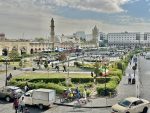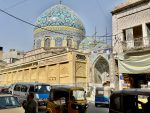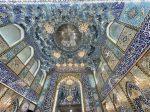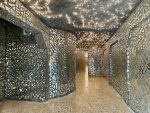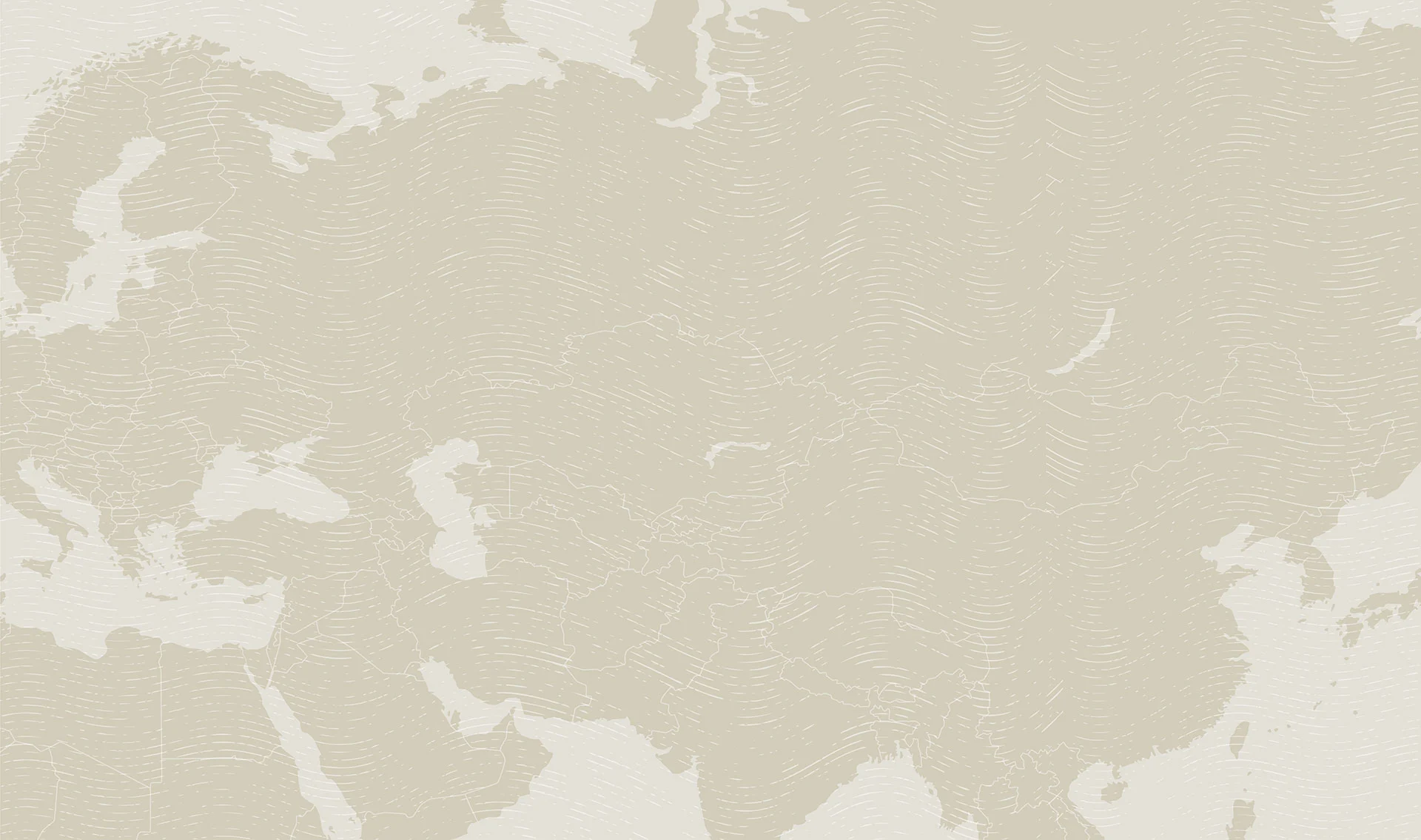Photo credit: Michel Behar
Touring in Iraq and Kurdistan
A Fresh Perspective on the Middle East’s Mesopotamian Heartland

MIR Tour Manager Michel Behar led two of our trips to Iraq in the fall of 2023, including Modern Mesopotamia. We asked Michel to describe the experience and to highlight some of his favorite spots and experiences in Iraq.

In October 2023, I led the inaugural two MIR small group tours through Iraq. The first focused on northern Kurdish areas of the country, similar to our Essential Kurdistan. The second, Modern Mesopotamia, focused on Baghdad and southern Iraq. Both tours had good-sized groups of participants from diverse backgrounds all across the U.S. We had a fantastic time, learned a lot about both modern Iraq and its ancient history, and benefited from some of the recent improvements to travel infrastructure in the country.
I first scouted southern Iraq and Kurdistan in 1989, just when the Iran-Iraq War was coming to an end and a year before Iraq invaded Kuwait. Baghdad was peaceful at that point and the hostilities in Kurdistan had temporarily ceased. The country still felt raw though, with indications of recent conflict all around. I remember seeing razed villages from a local bus, pointed out to me by my Kurdish traveling companions as evidence of Saddam Hussein’s brutality. Basra was off limits because of the ongoing threat from Iran. There were no tourists back then – just a few expats and guest workers from Bangladesh and Egypt. I was outnumbered by government minders, likely wondering why I was even there. It was a challenging time to be in Iraq.
(click image to view larger photo)
I made a return trip to Iraq in 2018 shortly after ISIS’s defeat by the Iraqi state and its diverse allies. At that point, it seemed that very little had changed since my previous visit decades prior. There were still very few tourists around. The wounds of war felt fresh and checkpoints were numerous, time consuming, and troublesome. War coming to an end was of course a common thread through both trips, so it really isn’t surprising that so little had changed.
My experience leading tours in Iraq in 2023 could not have been more different than in 1989 and 2018. The hospitality and warmth we were shown as Western travelers was remarkable. A conflict broke out in Israel and Palestine while we were on tour, but there was no discernable impact on us and all participants felt safe continuing on the tour. We saw no demonstrations. There was no mention of the conflict in Israel at all, actually. Our local guide explained that people were sick of war and wanted to focus on other things. Sure enough, it seemed that all locals cared about was taking photos with us and learning about who we were and where we were from. It was a fantastic experience and great to get a fresh perspective on Iraq.
(click image to view larger photo)
With that said, here is a list of some of my favorite on-tour experiences and sights in Iraq, in both Kurdistan and in the south of the country:
My Favorite Experiences and Sights in Kurdistan
- Mountains and rivers. You may think of Iraq as a sand-filled desert, but actually much of Kurdistan is lushly vegetated with mountains, waterfalls, and rivers. It even snows there!
- Diversity. Not all Iraqis speak Arabic. The Kurds speak an Indo-European language related to Persian. It is thought that the Kurds descend from the ancient Medes. Others in Kurdistan speak Aramaic and Turkish dialects.
- Ancient Christian monasteries. Kurdistan is home to ancient monasteries like the Rabban Hormizd Monastery, which is Chaldean Catholic, and the Monastery of St. Matthew, which is Syriac Orthodox.
- Lalish. Lalish is the spiritual center of the Yazidis, a persecuted and unique people. It is a beautiful and tranquil spot. You can read more about it here.
- Amedi. This scenically perched town has been a trading center for 3,500 years or more. Muslims, Christians, and Jews coexisted here for centuries.
- Gaugamela. While not much remains today, these fields are the site at which Alexander the Great defeated the Achaemenid Empire, changing the course of history in the region.
- Erbil. Erbil is a thriving city and the effects of decades of conflict can barely be felt in its bustling and developed center. It is home to an amazing bazaar and a spectacular citadel overlooks the old town.
- Hamilton Road. This incredible feat of engineering was built over a century ago. The road passes through stunningly beautiful terrain and has an interesting story tying into British colonialism in the region.
- The legacy of war. Kurdistan has a sobering and tragic recent history. We learned from victims of ISIS at a refugee camp. We also learned about the brutality of Saddam Hussein at a museum in Sulaymaniyah and while visiting the town of Halabja.
(click image to view larger photo)
My Favorite Experiences and Sights in South Iraq
- Recovering infrastructure. Iraq’s roads, hotels, airports, and even healthcare and educational systems are recovering. It is remarkable to contrast this to what I saw on past trips.
- Baghdad. This ancient city is one of the world’s most historically important places, but it is also a vibrant and modern home to millions. I loved strolling the lively Mutannabi Street and enjoying tea with locals at a café. Souq al Safafeer is a wonderful market located nearby.
- Malwiya Minaret. This imposing structure is located in Samarra. It has a unique spiral shape and was built by the Abbasids in the 9th century CE.
- Kufa and Najaf. These cities are home to some of the most important shrines and mosques to Shia Muslims. Their gold domes are beautiful, and it is fascinating to spend time amidst the seas of pilgrims visiting from around Iraq and the world.
- Marsh Arabs. The Marsh Arabs have historically populated the marshes and wetlands of southern Iraq. We explored their homeland by boat and enjoyed a lunch of masgouf (marinated and roasted fish).
- Ur and Uruk. These deeply ancient sites boast ziggurats built five millennia ago, around the same time that cuneiform writing was being developed.
- Gertrude Bell. We explore Bell’s life and legacy through a visit to Ukhaidir Palace, which was first surveyed by her in the early 20th century. Bell played a key role in the development of modern Iraq.
- Ezekiel’s Tomb. This ancient building is a relic of the once thriving Jewish community in Iraq, a community that existed for millennia, since the Babylonian Exile.
- Basra. Off limits to me in 1989, we were able to enjoy a pleasant sightseeing cruise on the Shatt al Arab (the confluence of the Tigris and the Euphrates) this time around.
(click image to view larger photo)

Travel to Iraq with MIR
Tourism is still a nascent industry in Iraq and one can’t expect the same level of development found in some neighboring countries. Southern Iraq in particular lags behind in terms of infrastructure and development and one must expect rough edges at the sights we visit, the hotels we stay at, and while traveling from city to city. A sense of adventure is imperative. Kurdistan feels a bit more polished, but still cannot be compared to places like Jordan or Turkey where tourism is very well developed. That is part of why I loved visiting Iraq this time around. It is a fascinating place and at a critical point in history where the creature comforts and smoothness that most of us have come to expect while traveling are just starting to mix in with raw authenticity.
You can find details on departure dates and read more about Essential Kurdistan and Modern Mesopotamia here. Please also read more about travel in Iraq on our blog. There is an introduction to southern Iraq here and one on Kurdistan here, or read MIR staffer Jake Smith’s account of his recent travels in Iraq.
Chat with one of our destination specialists today!
